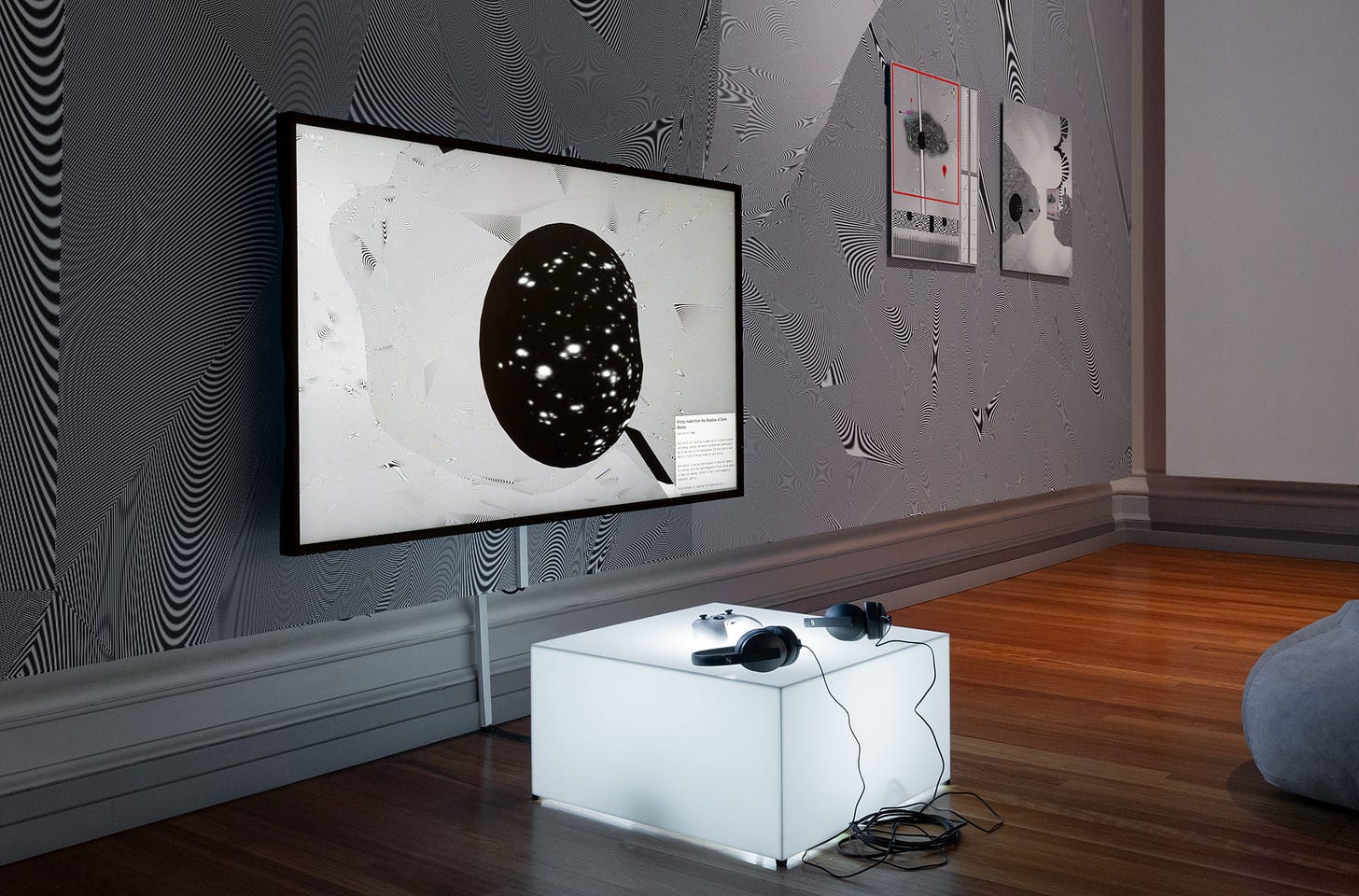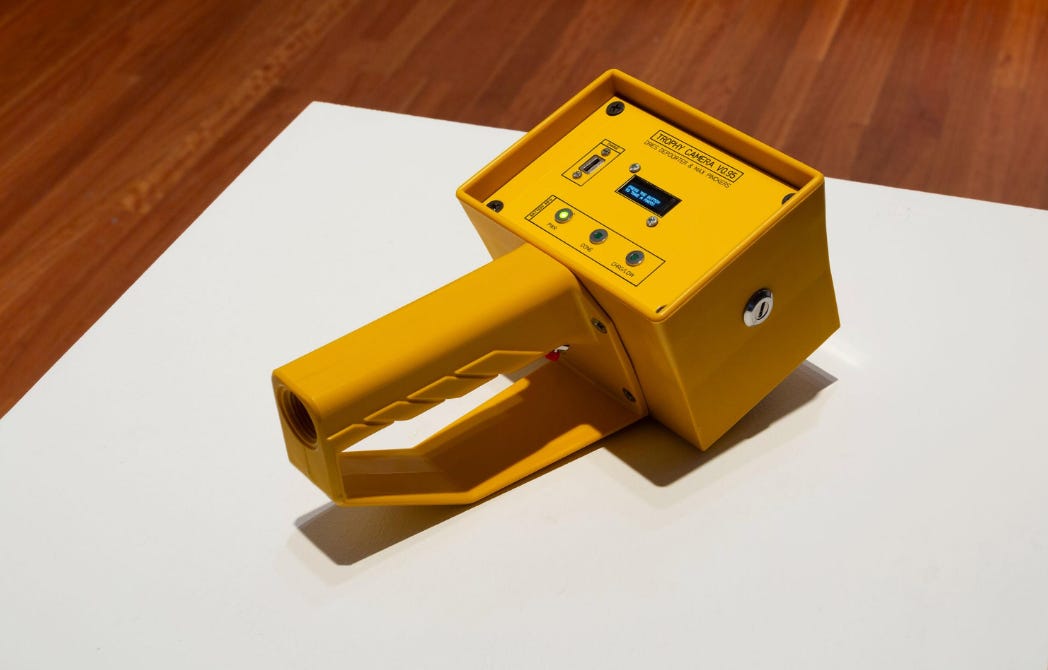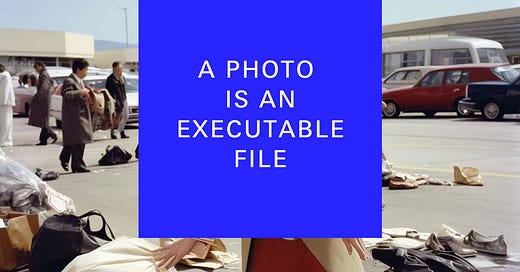Photography isn’t changing. It changed.
Decades ago.
I was lucky enough to spend a short fascinating time with Alison Bennett at the RMIT Gallery, talking about their recently curated Execute_Photography exhibition.
Despite the hype around AI photography, this is only part of the picture: the tensions within image-making are vast and wild.
A photo is an executable file
It’s a little naïve to think about photography as a practice consistent with prior generations.
Over the last few decades, photos have become software output, where a seemingly static image is, in reality, rich with layers of metadata and hidden information, and whose clean look is the result of extensive, automatic in-camera (and on phone) post-processing. It is almost unrecognisable from the tradition of light hitting a sensor; every digital photo is, in essence, already a hybrid process between human and machine, and it has been this way for decades.
If we instead begin to think of photos as executable files, then it forces us to interrogate the dynamic nature and potential of the image-making process, not just the outputs. A photo need not look like a photo; a photographer might not have the same skillset; the equipment might not look like a camera.
This need not be terrifying: it is already creating opportunities.

Impossible photos
Artists featured in the exhibition include works of impossibility and imagination.
Sara Oscar photographed imagined second-person memories in the series Counterfactual Departures, 1974. Documenting her mother’s migration from Thailand she has created a missing family archive; the synthetic photos made in Midjourney are warped and blurry with the uncanny quality of a dream.
Rosa Menkman has created an impossible, explorable image of a sub-atomic quark.
Dries Deporter and Max Pinckers, a new type of camera.
J. Rosenbaum, a gender-fluid pixel.

New Picasso
It’s a truism to say that the birth of photography inspired Picasso and other visual artists to tesselate their own work away from realism; and likewise, that photographers themselves must now redefine their practice in a more commoditised image culture.
I’d take it further. Artists have a responsibility to push the boundaries of their practice, whether embracing technology or transcending it. We must now all be willing to sail off the edge of the world.
In the excellent discussion between Mick Grierson and Luba Elliott about the future of creative AI, Grierson talks about technologists with “huge, speculative, philosophical theories about human creativity which make no sense whatsoever to anyone with experience in creative fields, yet somehow they think it’s possible to simulate human processes such as creative action without knowing anything about them”.
How we see ourselves, and how machines see us, will in part define our reality. Technologists working alone, chasing possibility, will fuck it up. Commerce only carries us so far, and generally for the few.
It is for artists to provocate and explore the tensions within the next era of image-making; to bite at and uncover and reveal and define.
To ask the questions about creativity that cannot be left to those who barely understand it.
There is power in how we collectively perceive reality.
Who will shape that?
If we own the .exe, we might resist dystopia.

.
.
.
Go further
Exhibition Curators: Alison Bennett, Shane Hulbert, Daniel Palmer, Katrina Sluis
Artists include: Memo Akten, Amrita Hepi, Max Pinckers and Dries Depoorter, Rosa Menkman, Sara Oscar, J. Rosenbaum, Sebastian Schmieg and Alan Warburton




